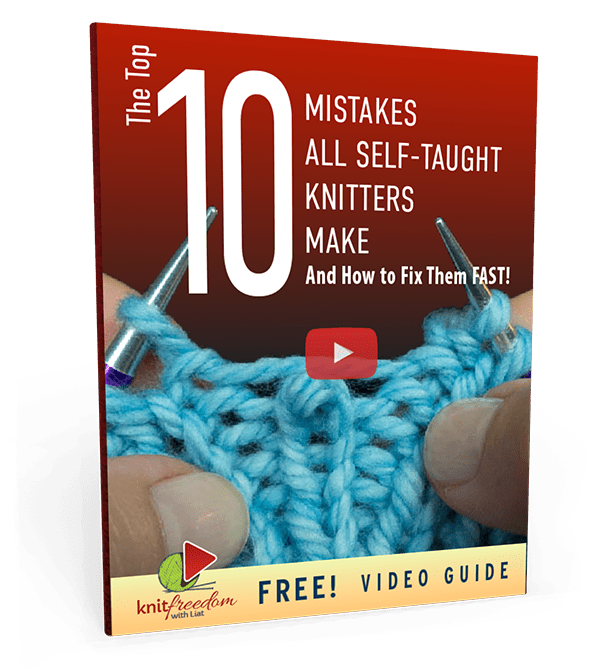Cast-On Tips and Tricks
The tips in this section will help your casting on go more smoothly and possibly get you out of a jam or two.
Never Run Out Of Tail – The Infinite-Tail Method

If you have to cast on a lot of stitches, say, for a sweater or a long circular scarf, you might have trouble estimating the amount of tail you will need.
Instead of trying to estimate and then risking running out of tail, you can just use both ends of your ball of yarn to do your cast-on.
Casting On Without A Slipknot – Two Methods

Many people would rather not have a slipknot in their cast-on.
There’s nothing wrong with having a slipknot in a cast-on, mind you, but if you prefer not to have one, there are two ways to get rid of it:
- For short-tail cast-ons, start with a slipknot and then pull it out at the end of the first row.
- For long-tail cast-ons, use the Twist Start method to start without a slipknot.
Both techniques are shown in the video below.
Restricted Video
 This video is available to members of Knitting Superstar University or the following classes:
This video is available to members of Knitting Superstar University or the following classes:
If you own this class, please LOG IN to watch.
How To Count Stitches Fast

You can really speed up the cast-on process by learning how to count your stitches fast.
If you can train your eye to discern groups of five stitches at a time, counting stitches won’t be a headache, even if you have to keep doing it as you add stitches.
Restricted Video
 This video is available to members of Knitting Superstar University or the following classes:
This video is available to members of Knitting Superstar University or the following classes:
If you own this class, please LOG IN to watch.
Tip: If you are casting on more than a hundred stitches, place a marker on your needle every 50 or 100 stitches, so that in case you need to count a few times as you approach the right number, you don’t have to repeat yourself.
Casting On To Two Needles

One trick you can use if you find yourself continually casting on too tight is to cast onto both your needles at once.
When you are done casting on, remove one needle, and you will see that your stitches are bigger but still nice and even.
Restricted Video
 This video is available to members of Knitting Superstar University or the following classes:
This video is available to members of Knitting Superstar University or the following classes:
If you own this class, please LOG IN to watch.
You can also experiment with casting on using a needle that is a few sizes bigger than what your pattern calls for.
Conversely, if you cast on too loose all the time, try using a needle a few sizes smaller than what your pattern calls for.

